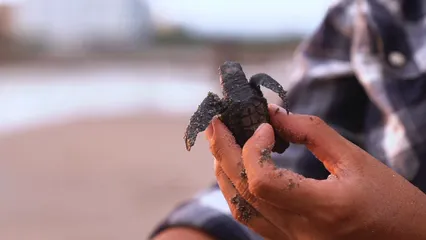Introduction
Picture this: our oceans are like a well-balanced diet, where every fish plays a vital role. If we overindulge or skip meals, we upset the entire system. Welcome to the 2023 ISSF Technical Report, where sustainable fishing practices take center stage. The International Seafood Sustainability Foundation (ISSF) and the International Shooting Sport Federation (ISSF) are here to guide us through this culinary adventure.
Why should we care? Well, sustainable practices ensure that fish populations remain healthy, just like eating your greens keeps you fit. The ISSF’s role is akin to a nutritionist, providing guidelines and best practices for fisheries and shooting sports alike. Together, these organizations strive to create a future where fish stocks thrive, and shooting sports enjoy a responsible edge.
In this report, we’ll uncover the many flavors of sustainability— from innovative technologies to collaborative efforts that are changing the game. Buckle up as we explore how these organizations work together to keep our oceans and sports sustainable. After all, what’s better than enjoying a plate of tuna that’s been caught responsibly? Let’s dive into the details.

Summary of Key Points
The ISSF Technical Report 2023 is packed with insights into sustainable practices shaping the fishing and shooting sports industries. Let’s break down the key highlights that will make you hungry for more information.
First, sustainable practices are the backbone of this report. These guidelines emphasize responsible fishing techniques that minimize environmental impact. By adopting best practices, fisheries can ensure the health of fish populations and ecosystems.
Understanding the importance of best practices can significantly enhance sustainable fishing efforts. best practices for using israel central bureau of statistics data visualization
Next up, notable achievements in sustainable tuna fisheries are celebrated. Did you know that about half of the global tuna stocks are now considered sustainable? This marks a significant improvement from previous years, thanks to dedicated efforts from the ISSF and its partners. If you’re looking to dive deeper into sustainable fishing practices, check out the Sustainable Fishing Practices Handbook. It’s the perfect guide for anyone wanting to make a splash in the fishing world.
Innovations in electronic monitoring and data collection play a pivotal role in this success story. The adoption of electronic monitoring systems allows for real-time data on fishing practices, ensuring compliance with sustainability measures. With more than 1,500 vessels now registered in the ProActive Vessel Register, transparency is becoming the norm in tuna fishing.
Collaboration is key. The report highlights how stakeholders—from fishers to conservationists—work together to promote sustainable practices. This teamwork ensures that everyone involved in the fishing industry is on the same page, striving for better outcomes. If you’re interested in the gear that supports this sustainable movement, consider the Electronic Monitoring Systems for Fishing to enhance your fishing experience.
However, challenges remain. The report addresses issues such as overfishing and illegal fishing practices. To counter these threats, the ISSF outlines strategies for overcoming obstacles and ensuring that progress continues. If you’re gearing up for a day on the water, don’t forget to check out the Tuna Fishing Gear Set for all your fishing needs.
In summary, the ISSF Technical Report 2023 presents a balanced meal of information. It showcases sustainable practices, notable achievements, innovative technologies, collaborative efforts, and strategies to tackle challenges. This report is a testament to the commitment of the ISSF and its partners to create a brighter, more sustainable future for our oceans and shooting sports. Now, who’s ready to dig deeper?

The ISSF’s Role in Promoting Sustainability
Overview of ISSF
The International Seafood Sustainability Foundation (ISSF) stands as a beacon for sustainable fishing practices. Its mission? To ensure our oceans remain vibrant and fish populations thrive. ISSF focuses on research, advocacy, and collaboration to promote responsible fishing. The foundation aims to eliminate illegal, unreported, and unregulated (IUU) fishing while fostering best practices across the fishing industry.
Through rigorous guidelines, the ISSF has significantly influenced global fishing policies. Its impact is evident in the rising number of sustainable tuna fisheries. Approximately half of the global tuna stocks are now considered sustainable—a significant leap from previous years. This transformation isn’t just a numbers game; it represents a collective commitment to preserving marine ecosystems for future generations.
By setting standards and providing resources, the ISSF empowers fishers and industry stakeholders. Their collaborative approach helps develop strategic plans that address challenges like overfishing. So, if you ever wondered how to enjoy that sushi guilt-free, now you know who’s behind the scenes!

Collaborations and Partnerships
The ISSF thrives on partnerships, engaging with NGOs, scientific organizations, and fishing industries. These collaborations are vital in promoting sustainability standards. By working together, stakeholders can tackle complex issues more effectively.
Take the ISSF’s partnership with various tuna companies, for instance. Through shared goals, they have developed initiatives that enhance transparency in fishing practices. This cooperation has led to the ProActive Vessel Register, boasting over 1,500 entries. This public register promotes accountability and encourages good practices among tuna vessels. If you’re looking for a way to keep your fishing gear organized, the Fishing Tackle Organizer is a must-have!
Moreover, the ISSF collaborates with NGOs to amplify its reach. These partnerships foster awareness around sustainable fishing practices. Initiatives like the “Skippers’ Guidebooks to Sustainable Fishing Practices” have been instrumental. Over 1,500 fishers participated in workshops, gaining valuable insights into eco-friendly practices. If you’re interested in making your fishing experience more eco-conscious, consider the Eco-Friendly Fishing Tackle Box.
Successful partnerships also extend to scientific organizations. By coordinating research projects, ISSF gathers critical data on tuna stock health and ecosystem impacts. These findings help shape policies, ensuring fish populations are managed sustainably.
In a nutshell, the ISSF’s collaborative spirit is crucial. By uniting various stakeholders, it creates a formidable force for positive change. Who knew that teamwork could accomplish so much? Together, they are paving the way for a sustainable future, one fish at a time!

Innovations in Sustainable Practices
Electronic Monitoring in Tuna Fisheries
Electronic monitoring (EM) is revolutionizing tuna fisheries. It ensures compliance with sustainability practices while promoting accountability. Imagine a world where every catch is tracked in real time. That’s the promise of EM!
This technology isn’t just a fancy gadget. It provides vital data on fishing practices. By recording activities, it helps identify areas for improvement. Fisheries using EM can make informed decisions, ultimately leading to better sustainability outcomes.
Let’s look at some shining examples. In the Western Pacific, several tuna vessels have adopted EM systems. These vessels now submit data regularly, allowing for real-time assessments. As a result, compliance with sustainable fishing practices has soared.
One notable case is the collaboration between ISSF and various fishing companies. By implementing EM, they’ve enhanced transparency and accountability. This partnership has proven successful, with participating vessels reporting improved catch data. This not only helps protect tuna stocks but also builds trust among consumers. If you’re serious about your fishing game, a Portable Fish Finder can be your best friend on the water!
In another instance, a fleet in the Indian Ocean adopted EM to combat IUU fishing. The results were impressive; illegal catches decreased significantly. This technology has become a game-changer in enforcing sustainability practices.
In conclusion, electronic monitoring is vital for sustainable tuna fisheries. It promotes compliance while offering invaluable insights into fishing practices. With ongoing advancements in technology, the future looks bright for our oceans!

Research Projects and Findings
In 2023, the International Seafood Sustainability Foundation (ISSF) rolled up its sleeves and tackled various research projects. A notable achievement was the coordination of 35 projects focused on tuna stock health and ecosystem impacts. These projects aimed to assess the effects of fishing practices on marine life and the overall health of tuna populations.
The findings were promising yet cautious. Several tuna stocks are showing signs of recovery, thanks to sustainable fishing methods. Reports indicate that 11 out of 23 major commercial tuna stocks are now avoiding overfishing, meeting Marine Stewardship Council (MSC) standards. This is a significant jump from previous years, reflecting the success of collaborative efforts in the fishing industry.
However, it’s not all smooth sailing. The research highlighted ongoing challenges, particularly in the Indian Ocean, where overfishing remains a pressing issue. Tuna stocks like yellowfin are still struggling, necessitating urgent action and compliance with fishing regulations. The ISSF’s commitment to monitoring these stocks will be crucial in ensuring their long-term sustainability.

Technology Adoption
The fishing industry is embracing cutting-edge technologies for sustainability. This year, the ISSF has been at the forefront of adopting new innovations aimed at optimizing fishing practices. One standout advancement is the implementation of electronic monitoring (EM) systems across all tuna fisheries.
These systems help track fishing activities in real-time, providing transparency and accountability. They allow fisheries to gather data on catch sizes, bycatch, and compliance with sustainable practices. This information is invaluable for making informed decisions that benefit both the environment and fishing operations.
Moreover, data analytics and artificial intelligence (AI) are becoming integral tools in optimizing fishing practices. By analyzing data collected from EM systems, fisheries can identify trends and adjust their strategies accordingly. This not only enhances sustainability but also boosts efficiency, ensuring that fishers can maximize their catch while minimizing their ecological footprint.
As we move forward, the ISSF’s commitment to integrating these technologies will play a pivotal role in shaping the future of sustainable fishing. By harnessing the power of data and innovation, the fishing industry can navigate challenges and work toward a healthier ocean ecosystem. And if you’re planning a fishing trip, don’t forget to pack a Waterproof Fishing Gear Bag to keep everything dry!

Case Studies of Successful Fisheries
The ISSF Technical Report 2023 shines a light on fisheries that embraced ISSF recommendations. One standout example is the Western Pacific tuna fleet. By adopting best practices for Fish Aggregating Device (FAD) management, these fisheries have drastically reduced bycatch. The results? Healthier tuna stocks and happier fishers! Local communities benefit too. They enjoy increased fish availability, leading to better livelihoods and food security. If you want to learn more about FADs, the Fish Aggregating Devices (FAD) are a great resource!
Another success story comes from the Indian Ocean region. Fisheries engaged in collaborative initiatives with the ISSF have implemented advanced electronic monitoring systems. This tech helps track fishing activities, ensuring compliance with sustainability practices. As a result, fish populations are rebounding. Local economies are thriving. It’s a win-win situation!
These cases illustrate the potential for positive change. By following ISSF recommendations, fisheries can not only protect marine ecosystems but also bolster the economic stability of coastal communities. The ripple effects of these changes are profound. Communities are revitalized, ecosystems restored, and the oceans are healthier than ever. And if you want to contribute to this cause, check out the Marine Stewardship Council (MSC) Certification Guide.

Challenges and Future Directions
Current Challenges in Sustainability
Sustainability in fisheries faces significant hurdles. Overfishing remains a persistent threat. Many fish populations are still struggling to recover. The ISSF highlights that Illegal, Unreported, and Unregulated (IUU) fishing continues to undermine conservation efforts. These activities deplete fish stocks and disrupt ecosystems. Without effective enforcement, sustainability goals are at risk.
Policy compliance also presents challenges. Many countries lack the necessary resources to monitor and enforce regulations effectively. This gap creates loopholes that IUU fishing exploits. Moreover, some regions face political instability, hampering cooperation between nations. These ongoing issues demand urgent attention.
Another challenge is the need for increased public awareness. Many consumers remain unaware of the implications of their seafood choices. Without demand for sustainable fish, fisheries may hesitate to adopt responsible practices. Education and advocacy play essential roles in shifting consumer behavior. If you’re looking for an engaging way to learn more, try the Ocean Conservation Educational Kit!

Looking Forward: ISSF’s Strategic Plans
The ISSF has ambitious strategic plans for the coming years. Their focus? To enhance global tuna sustainability and combat IUU fishing. The organization aims to expand its partnerships with NGOs and local communities. Collaboration is key to achieving shared goals.
One of the primary goals is to increase the adoption of electronic monitoring systems across all tuna fisheries. By 2027, ISSF envisions a comprehensive network of monitored fisheries, ensuring compliance and transparency. This approach will bolster accountability and empower fishers.
Furthermore, ISSF is committed to advancing research on tuna stock health and ecosystem impacts. By coordinating more research projects, they aim to identify best practices and address challenges. Knowledge is power, after all! And for those interested in sustainable food options, don’t miss the Sustainable Seafood Cookbook.
Continued collaboration with regional fisheries management organizations (RFMOs) is critical. By working hand-in-hand, they can ensure effective management of tuna stocks and promote sustainable practices. Together, they can tackle the complexities of fisheries management.
In conclusion, the ISSF’s strategic plans set the stage for a more sustainable future. By addressing current challenges and fostering collaboration, the organization is poised to make a significant impact. With collective effort, we can pave the way for thriving fisheries and healthy oceans.

Conclusion
In summary, the ISSF Technical Report 2023 serves as a crucial guide for sustainable practices within the fishing and shooting sports industries. It combines innovative approaches and collaborative efforts, reinforcing the importance of sustainability in preserving our oceans and ecosystems. The report highlights significant achievements, such as the increasing number of sustainable tuna stocks and the successful implementation of electronic monitoring systems.
These advancements are not just numbers on a page; they reflect a collective commitment to responsible fishing practices. By adopting best practices, stakeholders can minimize environmental impacts while supporting local economies. The ISSF emphasizes that sustainable practices lead to healthier fish populations, which benefits everyone—from fishers to consumers. And speaking of benefits, if you’re into healthy snacking, check out the Plant-Based Protein Powder!
Moreover, the collaborative spirit among fishers, NGOs, and scientific organizations is commendable. This teamwork is essential for addressing ongoing challenges like overfishing and IUU fishing. The ISSF’s strategic plans for the coming years aim to enhance this cooperation further, ensuring continuous progress toward sustainability.
As readers, you have the power to support these initiatives. Stay informed about the ongoing efforts to protect our oceans and consider choosing sustainably sourced seafood. By advocating for these practices, you contribute to a healthier planet. Let’s all play our part in this essential journey toward sustainability. After all, the future of our oceans—and our plates—depends on it. And for those sunny days out, don’t forget to grab some Eco-Friendly Sunscreen to protect yourself!

FAQs
What are the main objectives of the ISSF?
The International Seafood Sustainability Foundation (ISSF) focuses on promoting sustainable fishing practices. Its main objectives include eliminating illegal, unreported, and unregulated (IUU) fishing and fostering best practices across the global fishing industry. The ISSF aims to ensure the long-term health of fish populations and marine ecosystems.
How does ISSF monitor compliance with sustainability practices?
The ISSF employs various methods to monitor compliance. These include the ProActive Vessel Register (PVR), which lists vessels adhering to sustainability practices. Additionally, the ISSF conducts independent audits and collaborates with stakeholders to ensure that fishing activities align with established standards. These efforts promote transparency and accountability in the fishing industry.
What role do stakeholders play in promoting sustainability in fishing?
Stakeholders, including fishers, NGOs, and scientific organizations, play vital roles in promoting sustainability. Their collaboration fosters a shared understanding of challenges and successes in fishing practices. By working together, they can develop and implement effective strategies for sustainable fishing, improving outcomes for both the industry and the environment.
What are the benefits of sustainable fishing practices for the environment and local economies?
Sustainable fishing practices offer numerous benefits. Environmentally, they help maintain healthy fish populations and preserve marine ecosystems. Economically, these practices support local communities by ensuring a reliable seafood supply. Sustainable fisheries contribute to job security and food security, creating a win-win for both people and the planet.
Please let us know what you think about our content by leaving a comment down below!
Thank you for reading till here 🙂
All images from Pexels



